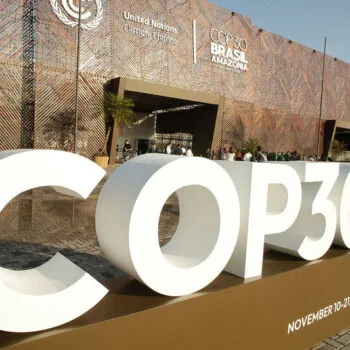In November 2015, 195 countries signed the carefully crafted Paris Agreement, paving the way for a better world and stronger economy for future generations. Now it is time to defend and implement the agreement and the European Union should position itself at the forefront of the global fight against climate change. The EU can do this by renewing climate diplomacy efforts and designing the governance framework, policy tools and market rules to drive its clean energy transition. We will always have Paris, but only if we move full steam ahead to implement its provisions.
On 1 June 2017, President Trump decided to pull the United States out of the Paris Agreement, confirming fears of climate advocates across the globe. The move did not create a precedent for others to follow however. Quite to the contrary Trump’s declaration spurred an outpouring of support for the commitments reached in Paris. Despite these reassuring reactions, there is no room for complacency. More than ever, the EU must ramp up its ambition, sending a strong message that the Paris Agreement and the clean energy transition are here to stay.
A clear climate divide already emerged at the G7 meeting in Taormina, Italy at the end of May, with the US administration on one side and the ‘G6’ with Canada, Japan, the United Kingdom, France and Italy reaffirming their commitment to the Paris Agreement on the other. After President Trump’s announcement, major emerging countries like China and India also expressed their support for Paris, acknowledging the threat climate change poses for their economies and the business opportunities offered by the clean energy transition. The High Ambition Coalition that brokered the Paris Agreement also issued a statement following President Trump’s announcement, redoubling their support for the deal. Equally, non-state actors across the world have been supportive of the agreement. Even state, local, academic and business leaders in the United States are reaffirming their commitment to the Paris Agreement under the ‘We are still in’ campaign. In their joint statement, signatories to the campaign express their support for ambitious climate action and accelerating the clean energy transition.
There is political momentum for the EU to defend the Paris process, as well as to ramp up ambition at the global level to ensure contributions add up to maintain temperature rise well below 2ºC. The opportunity is right before our eyes, with renewable capacity installation costs plummeting and a strong business case for clean technologies. A recent OECD report on the positive impact that climate action has on economic growth makes the case for the clean energy transition even stronger. The expansion of clean technologies will continue, regardless of the US decision, with others taking the lead in the global clean energy transition.
On June 1-2, the EU and China reaffirmed their climate and energy cooperation on the sidelines of the EU-China Summit. They announced their intention to strengthen bilateral cooperation to monitor progress made in climate action and to accelerate the clean energy transition in areas such as energy labelling, product efficiency regulations, zero-emissions vehicle rules and electricity market design. China, the world’s biggest exporter with a fast-growing consumer base; and the EU, the world’s largest trading bloc, will be at the forefront of shaping products, markets and supply chains internationally. This confirms that European experience on what institutional, legal, financial and regulatory approaches are better suited for the low carbon transition can be leveraged internationally.
For this vision to become a reality, the EU needs to make steady progress in the completion of the Energy Union. Clean energy transition challenges are better addressed through European value added and a coherent EU-wide approach. In this regard, it is essential that the legislative process for the files under the Clean Energy Package will be finalised in a comprehensive manner. Thus, there is an urgent need to avoid cherry-picking, making sure that negotiations between EU institutions do not result in dysfunctionalities for the objectives of the Energy Union. What’s at stake is the European Union’s ability to decarbonise both affordably and inclusively. Only by building up a robust domestic climate and energy framework based on this vision will the EU have the moral authority and the capacity to lead this transition at the global level.
Internationally, all eyes are on the G20 Hamburg Summit in early July. When taking office in November 2016, Germany announced climate action would be one of the key focuses of its G20 presidency. Germany stressed the importance of monitoring progress on implementation of Nationally Determined Contributions and ramping up insurance coverage against climate risks for the poorest. The EU must now attempt to build on the political momentum from the G7 and EU-China summit to ensure the G20 delivers on linking environment and energy policy more closely, as well as developing political frameworks, financing instruments, and economic incentives for investments in climate-resilient infrastructure and technology. Beyond the G20, the EU must also build partnerships with other emerging economies to ensure the Paris Agreement is fully implemented.
Finally, climate diplomacy is changing to a less state-centred approach. In its quest for world climate leadership, the EU should not forget non-state actors have a say in the clean energy transition and that their voices must be heard.
In fact, the EU can provide the platform for non-state actors in other countries to raise their concerns. The Vice-President of the European Commission for the Energy Union, Maroš Šefčovič, already reached out to the members of the ‘We are still in’ campaign, a first step to let them know they are not alone in their ambition and that most of the world is standing by their side. In order to turn this into substantial cooperation however, the EU should host a World Summit for Regional and Local Actors. A summit would allow cities, states and regions from around the world to exchange best practices, increase their climate and energy cooperation, and make the case for their concerns and needs to be heard at the highest political level.


